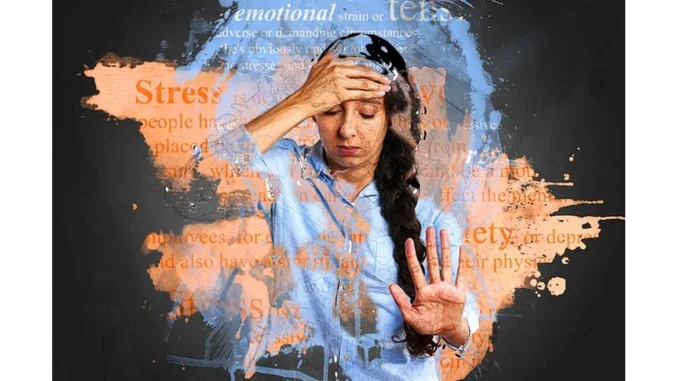
Understanding Anxiety Disorders: A Comprehensive Guide to Symptoms and Causes
Elegancia – Wellness and tranquillity in the comfort of your home.
Anxiety is an innate response, a natural alarm that primes the body to tackle challenges head-on. While it can enhance focus and performance during stressful situations, such as delivering a speech or tackling an exam, trouble arises when anxiety becomes overwhelming or occurs without a clear trigger. This can signal the presence of an anxiety disorder—a condition marked by chronic, disproportionate anxiety that disrupts daily life and well-being. In this elegant exploration, we delve into the nuanced world of anxiety disorders, illuminating their symptoms, types, and causes, while providing practical insights into seeking help.
The Essence of Anxiety
Anxiety, in its natural form, is a vital part of the human experience, acting as a sophisticated internal alert system. It readies us to respond to potential threats, sharpening our senses and preparing us for action. However, when this alert system malfunctions, manifesting as persistent, excessive worry, it may indicate an anxiety disorder. These disorders herald a state of heightened tension and apprehension, often leading to physical symptoms and emotional turmoil.
Recognising the Symptoms of Anxiety Disorders
The spectrum of anxiety disorders is vast, with symptoms that can vary significantly among individuals. Key indicators often encompass:
- A pervasive inability to relax
- Excessive, unrealistic worry
- Difficulty sleeping
- Rapid heartbeats or palpitations
- Gastrointestinal disturbances
- Persistent feelings of dread
- Sweating or chills
- A sense of detachment from reality
These symptoms may surface without an apparent stressor, making daily life increasingly challenging.
Exploring Types of Anxiety Disorders
-
Generalised Anxiety Disorder (GAD): This condition involves chronic, exaggerated worry about everyday matters, often accompanied by fatigue, headaches, and muscle tension.
-
Panic Disorder: Marked by sudden, intense episodes of fear known as panic attacks, this disorder can manifest through chest pain and shortness of breath, often linked with agoraphobia.
-
Phobias: These irrational fears of specific objects or situations—such as heights or flying—lead to avoidance and significant distress.
-
Social Anxiety Disorder: Also referred to as social phobia, this involves overwhelming anxiety and excessive self-consciousness in social settings, fuelled by a fear of judgement.
-
Obsessive-Compulsive Disorder (OCD): Characterised by intrusive obsessions and repetitive compulsions, OCD can severely disrupt daily routines.
-
Post-Traumatic Stress Disorder (PTSD): Emerging after exposure to a traumatic event, PTSD includes flashbacks, nightmares, and severe anxiety.
Unveiling the Causes and Risk Factors
The origins of anxiety disorders remain complex, often arising from a blend of genetic, environmental, and psychological influences. Risk factors include:
- Genetics: A family history of anxiety disorders may heighten one’s vulnerability.
- Trauma: Experiencing or witnessing traumatic events, particularly in childhood, can trigger anxiety.
- Stress: Ongoing stress from personal, professional, or health concerns contributes significantly.
- Personality Traits: Individuals prone to excessive worry may be more susceptible.
When Professional Guidance Becomes Essential
If anxiety begins to hinder one’s ability to function, impacting relationships or work, seeking professional help is imperative. Untreated anxiety can pave the way for depression, substance abuse, and other complications. Tailored treatment plans, often comprising therapy and medication, offer a pathway to recovery and improved quality of life.
Navigating the Intricacies of Panic Attacks and Anxiety Disorders
Amidst the spectrum of anxiety disorders, panic attacks stand out as intense, often terrifying episodes, punctuated by a sudden surge of fear. This intricate discussion sheds light on the nature of panic attacks, their interplay with anxiety disorders, and strategies to manage and transcend these adversities.
Defining a Panic Attack
A panic attack is a crescendo of acute fear and anxiety, reaching its peak within moments. These episodes can arise unexpectedly or be triggered by specific stressors. Symptoms include:
- Overwhelming fear of losing control
- Heart palpitations or chest discomfort
- Difficulty breathing
- Dizziness or lightheadedness
- Chills or sweating
- Tremors or shaking
- Nausea or stomach upset
Such symptoms often mimic a heart attack, amplifying the distress experienced.
The Interconnection with Anxiety Disorders
Panic attacks are a defining feature of panic disorder but can appear alongside other anxiety disorders, such as social anxiety or generalised anxiety disorder. The looming fear of subsequent attacks can create a cycle of avoidance and heightened anxiety, profoundly affecting one’s existence.
Deciphering the Causes of Panic Attacks
The precise origins of panic attacks remain elusive, though contributing factors may include:
- Genetics: A familial predisposition to panic attacks or anxiety disorders
- Stress: Significant life changes or chronic stressors
- Biological Elements: Neurochemical imbalances or brain function anomalies
- Environmental Cues: Specific situations or locales that trigger anxiety
Mastering the Management of Panic Attacks
While panic attacks can be formidable, employing certain strategies can mitigate their impact:
- Breathing Exercises: Slow, deep breathing techniques can soothe the body’s stress response.
- Mindfulness and Grounding: Concentrating on the present and engaging in grounding exercises can redirect focus from panic symptoms.
- Cognitive Behavioural Therapy (CBT): This therapeutic approach helps reframe negative thought patterns that fuel anxiety.
- Medication: Prescriptions may be considered to manage symptoms, under the guidance of a healthcare professional.
- Lifestyle Adjustments: Regular physical activity, a balanced diet, and sufficient sleep support mental health.
Supporting Those Experiencing Panic Attacks
Understanding and patience are invaluable when supporting someone with panic attacks. Offer reassurance that the episode will pass and advocate for professional assistance where necessary.
By embracing these insights and strategies, individuals can navigate the complexities of anxiety disorders, paving the way for a life enriched with understanding and resilience, even amidst the challenges these conditions present.


Be the first to comment